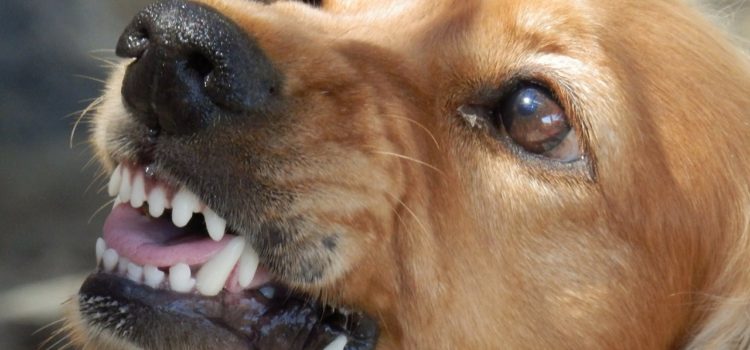Touching and petting your puppy or older dog provides a very valuable reward for them. Studies conducted (by Tuber) in 1986 have found that dogs that respond to petting as a reward exhibit cardiac deceleration while being petted. Close social interaction between people and dogs results in a cascade of neurobiological events that facilitate enhanced attachment and comfort. These types of interactions produces an elevation in circulating neuropeptides (endorphin, oxytocin and prolactin) and other neurochemicals that mediates pleasure, affiliative emotions and social attachment. Oxytocin actively mediates social bonding and exerts a pronounced cardiovascular change and has an anti-stress effect, while exerting a potent decreasing effect over irritability (Lund et el. 2002) and aggression ‘reducing all forms of aggression that have been studied’ (Panksepp, 1998).
Ttouch – another form of tactile stimulation – helps to stimulate the release of dopamine, which is associated with bonding, attachment, motivation and focused thinking and serotonin, which is associated with a positive emotional state and feeling content. A reduction in these neurotransmitters can lead to impulsivity, aggression, irritability, anxiety, difficulty learning and a diminished positive feeling.
Hennessy and colleagues (1998) have reported that the way in which petting is done is also very important. Long, firm, slow and continuous strokes (such as the Noah’s March touch from Ttouch) produces the best stress-reducing and calming down effects, whereas quick and light touches increases arousal, stimulation or even irritation. In 1994 Gantt observed that slow firm petting exerted a potent inhibitory effect over conditioned anxiety in dogs.
Teaching puppies (or adult dogs) to relax, by means of petting and massage, is just as important as any other training activities. Before coming into its new home the average puppy is exposed to a tremendous amount of physical interaction, excitement and playful competitiveness with their littermates. These puppies are now accustomed to a high level of social stimulation that is now no longer available in their new home, thereby triggering unwelcome attention-seeking behaviours towards to the humans (and resident canines) in the household. Owners are sometimes frustrated by the new puppy’s incessant search for stimulation and interaction and this could, therefore, lead to improper disciplinary practices or excessive confinement of the puppy.
Puppies that exhibit such competitive and stimulation seeking behaviours should be exposed to graduated relaxation exercise e.g. slow petting, massage or Ttouch to reduce agitation and decrease competitive tension, instead of using force or domination tactics.
Early tactile stimulation in the form of massage, gentle-firm touching or Ttouch exerts a profound and long-lasting influence on activity levels, learning and problem solving abilities, confidence and emotional reactivity. Failure to obtain the correct early tactile stimulation may represent a significant source of stress for newly adopted puppies and can induce a variety of compensatory behaviours such as hyperactivity, excessive contact seeking and proximity seeking behaviours, over-excitability and increase aggressiveness associated with frustration and irritability (Slabbert and Rasa 1993).
Together with sufficient environmental enrichment, exercise, play, daily positive training activities and tactile stimulation, which includes gentle restraining efforts, can help modulate a puppy’s social competitive and stimulation needs. During these gentle manual restraint, (as some of you might have practiced in my puppy courses) the puppy is exposed to mild limit-setting actions. An example of that is to gently contain the puppy while stroking him; when he wriggles, mouths or tries to get away (Posture communicates behavioural intention and reflects underlying emotional and motivation states.) is to simply carry on with the gentle stroking and using vocal reassurance until the puppy calms down and is then released. The relaxation period is then extended over time before he is released. The puppy then gradually learns to submit to handling as a source of increased comfort and safety rather than evoking competitive reactivity and resistance. The restraint in this case is gentle, consistent and clear but not overtly intimidating or threatening. In the case of puppies (or dogs) becoming aggressive, professional help should be sought.
The objective of such exercises is to help the puppy accept a level of control with minimum reactively, thereby improving its willingness to submit and ultimately achieving enhanced feelings of affection, comfort, safety with his owner and to progressively become more relaxed and compliant. Massage induced relaxation or any other tactile method such as Ttouch makes tasks like grooming, nail clipping, giving medication, having sutures removed, giving ear / eye drops, examining feet, tail, ears, teeth less stressful for the puppy or (and owner!).
Temple Grandin (author of ‘Animals in Translation’) who is autistic, has found that deep touch pressure (e.g. massage or firm continuous touches) alleviates the touch aversion exhibited by many autistic persons. In addition to becoming less aggressive and tense, she reported becoming more receptive of human touch and gentler in her own touching contacts with other people and her pet. The Ttouch Body Wrap placed on dogs has a similar effect. This body wrap exerts a gentle continuous pressure that helps to calm the dog down.
All though not ‘doggy’ related, but very interesting, Field (1995) discovered that premature babies given tactile stimulation consisting of light stroking failed to gain weight, whereas babies who received tactile stimulation in the form of gentle firm strokes did gain weight. In addition Field and his colleagues (1996) also discovered that massage therapy helped to alleviate stress related physiological and behavioural symptoms exhibited by babies born to depressed mothers. Over a 6 week period with regular sessions it significantly increased serotonin levels. This increased the contact responsiveness and sociability in the infants.
Massage, Ttouch or whichever tactile stimulation you choose to use is far more beneficial than just a feel good activity to do with your dog or puppy. Make time to touch your dog mindfully every day. Ten minutes (or hopefully more!) of focused, mindful and intentional petting/stroking is far more beneficial than a casual touch here and there throughout the day.
References:
Lindsay, Steven – Applied Dog Behaviour , Training Vol. 3
Grandin, Temple – Animals in Translation, Using the mysteries of Autism to Decode Animal Behaviour
Cascade, Kathy. Article – The sensory side of Ttouch
Copyright Claire Grobbelaar



